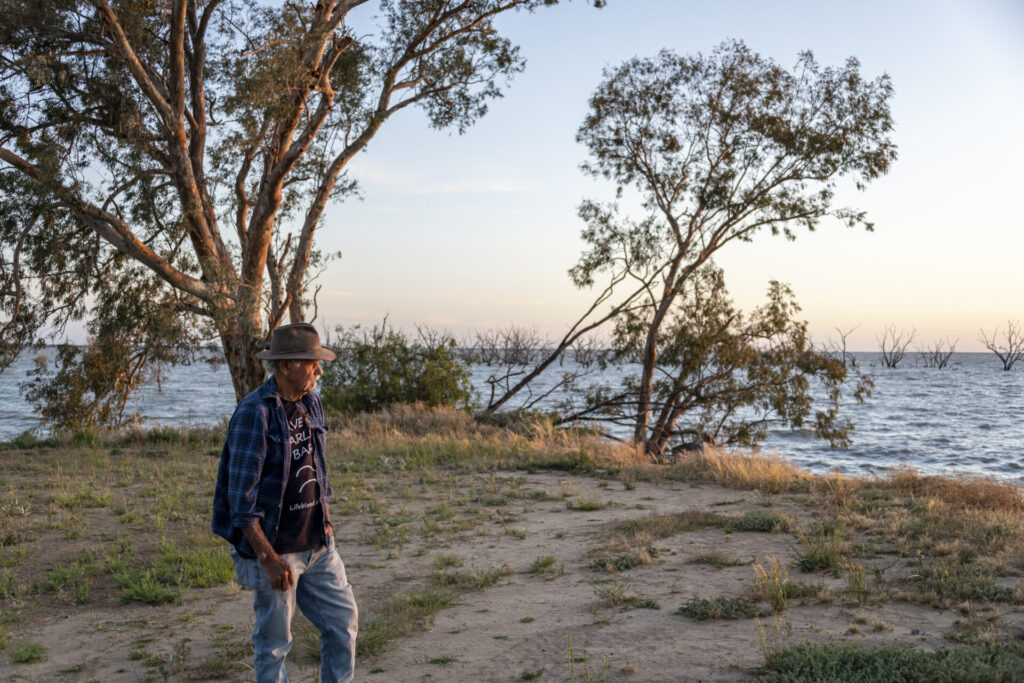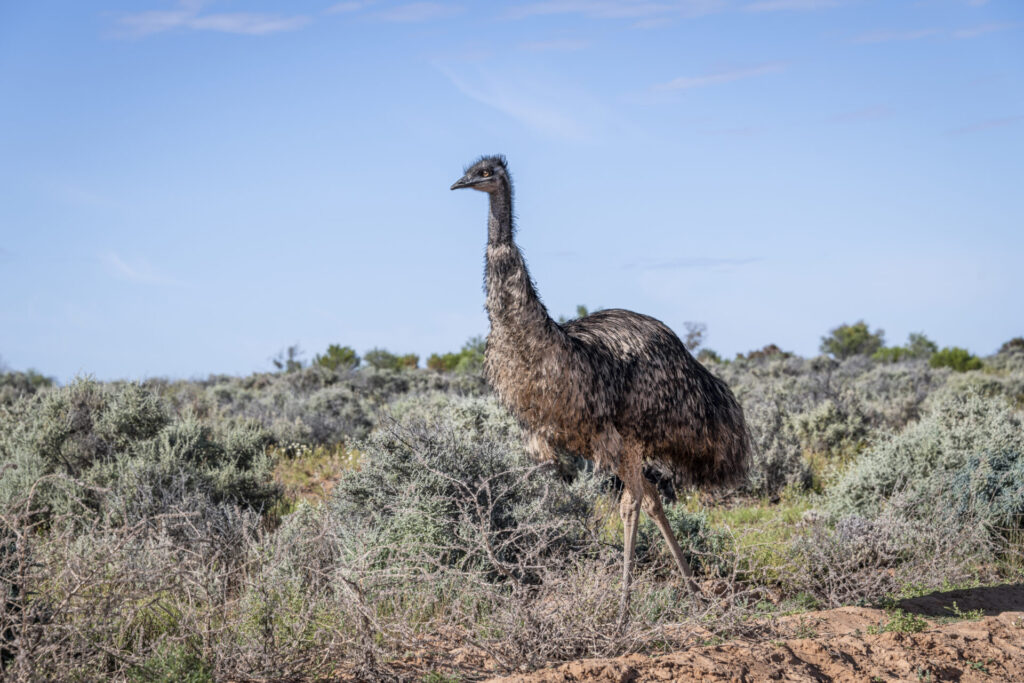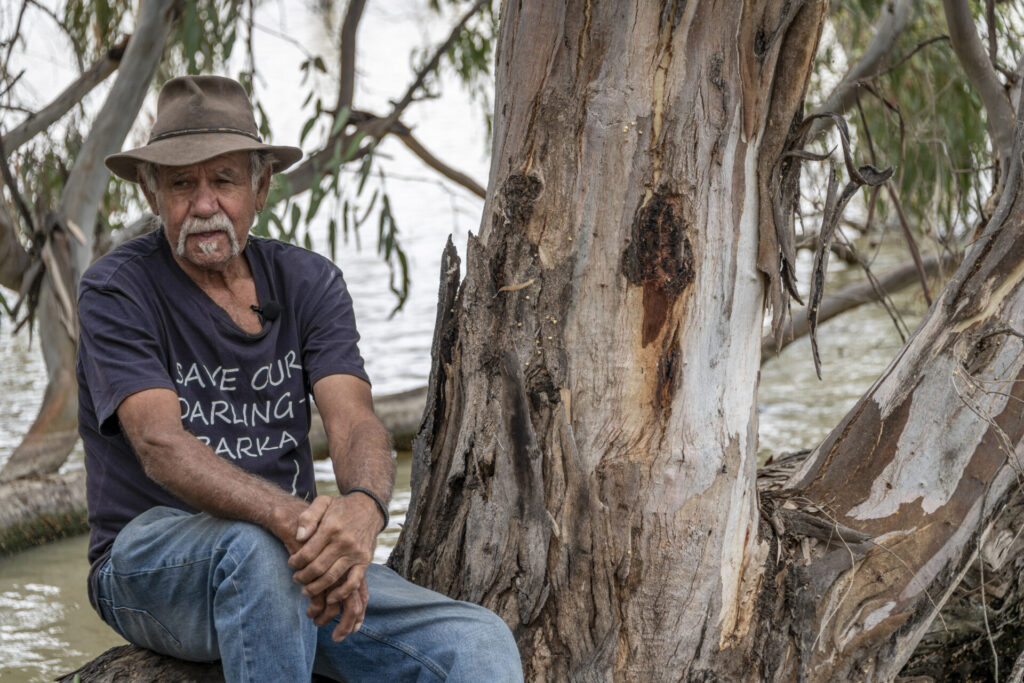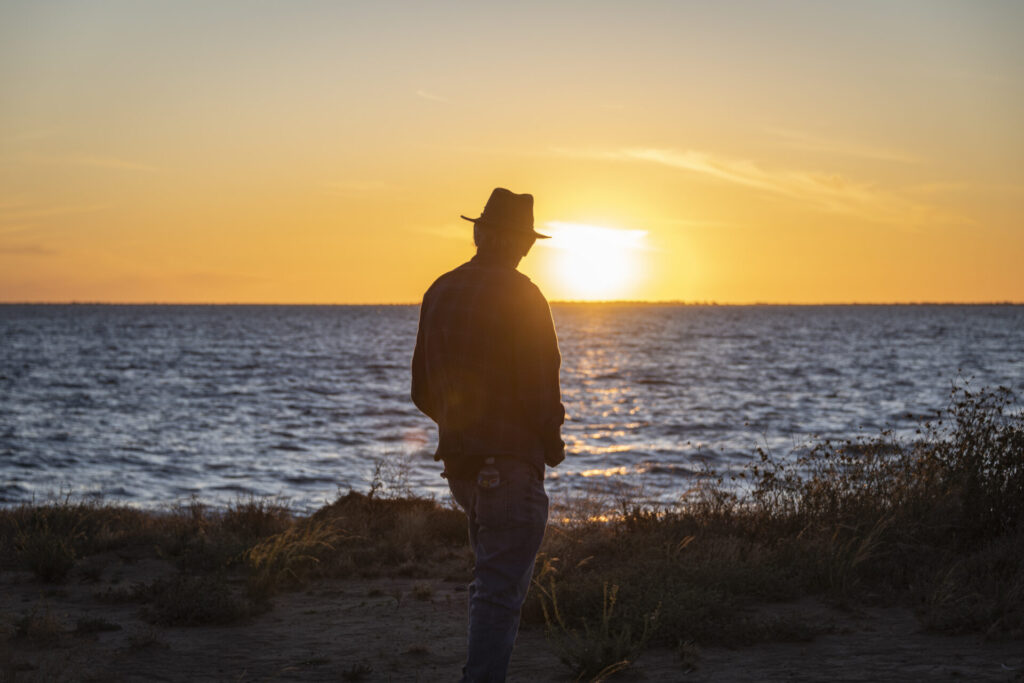Timely exhibition draws us to the distressed Barka (Darling River)

An exhibition featuring the work of Barkandji Elder Uncle Badger Bates and visual artist Justine Muller at the Australian Museum could not be a more timely prompt for our attention as calls for action follow the latest devastating fish kill.
The worst fish kill in history reportedly was recorded last month at Menindee on the Barka (Darling River). Estimates of 20 million fish draped the river’s surface after oxygen levels in the water fell catastrophically low. The latest development has left local communities distressed, but the river has long been in trouble. An exhibition under way at the Australian Museum, and supported by The Balnaves Foundation, brings a timely focus on how this beautiful part of the country is calling for our attention.
Barka: The Forgotten River brings together works by artist and Barkandji Elder, Uncle Badger Bates and visual artist Justine Muller to tell the stories of the magnificent Barka and its plight. The longest river in Australia at 1,472km, the Barka is under threat and the curators want us to understand the need to repair the relationship with the river and its valuable resources. The NSW state government has promised an investigation into what caused the fish kill.
The Barka exhibition features objects from the Australian Museum’s First Nations collection, which along with Bates and Muller’s artworks that combine carvings, sculptures and audio-visual production to convey the importance of this extraordinary river system, and bring into sharp relief the environmental impacts it is facing.

Focusing on the stories, culture and people who depend on Barka as a life source, the exhibition has been a 20-year project for Uncle Badger. Born and raised on the river in Wilcannia, his grandmother Granny Moysey, showed Uncle Badger how to carve and taught him about his Barkandji culture while travelling along the river. The collaboration between the two artists and their mixed media, along with cultural objects from the museum’s renowned collection, are said to take the visitor on an unforgettable journey.

Uncle Badger says: “Where rivers wander, life can flourish. Rivers and surrounding areas are home to different plants and species such as fish, yabbies, mussels, turtles, birds, and Red River Gums. These animals and plants have been an important cultural and food source for the Barkandji people who have relied on the Barka’s interconnected ecosystems for thousands of years.
“Rivers have shaped us as a species, long before we have shaped them. The modern world has attempted to change, divert, straighten and drain them. We must now restore our ‘Barka’ so she may help restore us.”
Justine Muller, who sought a blessing from an Elder before traveling out on to Country, says it was a great privilege to be welcomed into the community. “I hope that through this exhibition we can help bridge the cultural gaps and remind visitors of ancient truths that are now more relevant than ever,” she says.
CEO of The Balnaves Foundation, Hamish Balnaves, says: “The Barka (Darling River) is under threat from irrigation and farming practices. The recent and devastating fish kills at Menindee demonstrate the importance of exhibitions like Barka which seek to communicate the ecological and cultural issues impacting our country to a broader audience. We support the traditional custodians for whom the Darling-Barka is a vital resource for the region and the community.”

This free exhibition, supported by The Balnaves Foundation, runs until 23 July in Hintze Hall, Ground Level, Australian Museum. Barka: The Forgotten River – The Australian Museum
Photos: Australian Museum Media